R.J. Stowell's Blog: rjsomeone, page 83
March 16, 2018
The Beatles; U.S. vs. U.K.
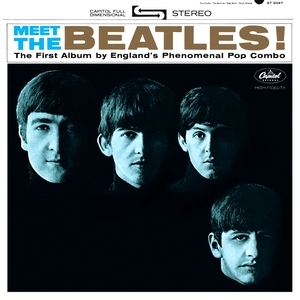 The Beatles' official canon is, with the exception of Magical Mystery Tour, the band's British releases, the first LP being Please Please Me (Parlophone, March 22, 1963), with the following playlist: Side One – 1. I Saw Her Standing There; 2. Misery; 3. Anna (Go To Him); 4. Chains; 5. Boys; 6. Ask Me Why; 7. Please Please Me. Side Two - 1. Love Me Do; 2. P.S. I Love You; 3. Baby It's You; 4. Do You Want To Know A Secret; 5. A Taste Of Honey; 6. There's A Place; 7; Twist and Shout. Vee Jay Records in the U.S. (July 22, 1963, allegedly) left the play order intact, but omitted "Ask Me Why" and "Please Please Me," for a total of 12 tracks rather than 14, and renamed the LP Introducing the Beatles with an alternate cover photo. These two LPs would set a precedent that would last through Revolver. The British debut contained eight original compositions and six covers.
The Beatles' official canon is, with the exception of Magical Mystery Tour, the band's British releases, the first LP being Please Please Me (Parlophone, March 22, 1963), with the following playlist: Side One – 1. I Saw Her Standing There; 2. Misery; 3. Anna (Go To Him); 4. Chains; 5. Boys; 6. Ask Me Why; 7. Please Please Me. Side Two - 1. Love Me Do; 2. P.S. I Love You; 3. Baby It's You; 4. Do You Want To Know A Secret; 5. A Taste Of Honey; 6. There's A Place; 7; Twist and Shout. Vee Jay Records in the U.S. (July 22, 1963, allegedly) left the play order intact, but omitted "Ask Me Why" and "Please Please Me," for a total of 12 tracks rather than 14, and renamed the LP Introducing the Beatles with an alternate cover photo. These two LPs would set a precedent that would last through Revolver. The British debut contained eight original compositions and six covers.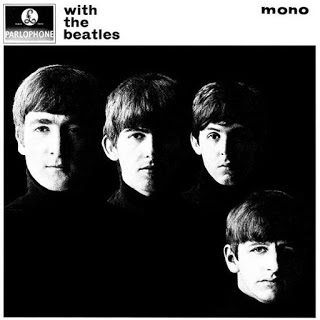 I grew up in the States with Meet the Beatles (still my preferred tracklist). In the U.K., Parlophone released With the Beatles on November 22, 1963, coincidentally the day of the JFK assassination. The tracklist was: Side One – 1. It Won't Be Long; 2. All I've Got To Do; 3. All My Loving; 4. Don't Bother Me; 5. Little Child; 6. Till There Was You; 7. Please Mr. Postman; 8. Side Two – 1. Roll Over Beethoven; 2. Hold Me Tight; 3. You Really Got A Hold On Me; 4. I Wanna Be Your Man; 5. Devil In Her Heart; 6.Not A Second Time; 7. Money. This time there were nine original compositions and five covers. The American release once again contained twelve songs with Capitol's contention of "groove crowding." My preference lies in the lack of covers on the American release, with the exception of "Till There Was You," from The Music Man, an inclusion that would please parents. Side One – 1. I Want To Hold Your Hand; 2. I Saw Her Standing There; 3. This Boy; 4. It Won't Be Long; 5. All I've Got To Do; 6. All My Loving. Side Two – 1. Don't Bother Me; 2. Little Child 3. Till There Was You; 4. Hold Me Tight; 5. I Wanna Be Your Man; 6. Not A Second Time. The LP cover, the iconic black and white photograph by Robert Freedman, was altered for the American LP with a slightly bluish tint. Meet the Beatles was released January 20, 1964.
I grew up in the States with Meet the Beatles (still my preferred tracklist). In the U.K., Parlophone released With the Beatles on November 22, 1963, coincidentally the day of the JFK assassination. The tracklist was: Side One – 1. It Won't Be Long; 2. All I've Got To Do; 3. All My Loving; 4. Don't Bother Me; 5. Little Child; 6. Till There Was You; 7. Please Mr. Postman; 8. Side Two – 1. Roll Over Beethoven; 2. Hold Me Tight; 3. You Really Got A Hold On Me; 4. I Wanna Be Your Man; 5. Devil In Her Heart; 6.Not A Second Time; 7. Money. This time there were nine original compositions and five covers. The American release once again contained twelve songs with Capitol's contention of "groove crowding." My preference lies in the lack of covers on the American release, with the exception of "Till There Was You," from The Music Man, an inclusion that would please parents. Side One – 1. I Want To Hold Your Hand; 2. I Saw Her Standing There; 3. This Boy; 4. It Won't Be Long; 5. All I've Got To Do; 6. All My Loving. Side Two – 1. Don't Bother Me; 2. Little Child 3. Till There Was You; 4. Hold Me Tight; 5. I Wanna Be Your Man; 6. Not A Second Time. The LP cover, the iconic black and white photograph by Robert Freedman, was altered for the American LP with a slightly bluish tint. Meet the Beatles was released January 20, 1964.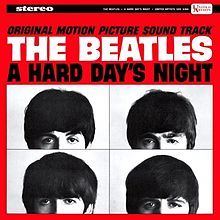 Capitol would rush to release The Beatles Second Album just three months later, comprised of what was excluded from the first British releases, with the only original composition being "She Loves You." If there was an LP that exemplified Capitol's exploitation of The Beatles, it was The Beatles Second Album.
Capitol would rush to release The Beatles Second Album just three months later, comprised of what was excluded from the first British releases, with the only original composition being "She Loves You." If there was an LP that exemplified Capitol's exploitation of The Beatles, it was The Beatles Second Album. The American issue of A Hard Day's Night preceded the British counterpart by two weeks (June 26, 1964/ July 10, 1964). The United Artists release (having the film rights to release an OST) had all the film's original compositions (eight of them) and four George Martin instrumentals. Both the American and British releases contained all original compositions, though the British had five more new Beatles tracks: Side One - 1. A Hard Day's Night; 2. I Should Have Known Better; 3. If I Fell; 4. I'm Happy Just To Dance With You; 5. And I Love Her; 6. Tell Me Why; 7. Can't Buy Me Love. Side Two – 1. Any Time At All; 2. I'll Cry Instead; 3. Things We Said Today; 4. When I Get Home; 5. You Can't Do That; 6. I'll Be Back.
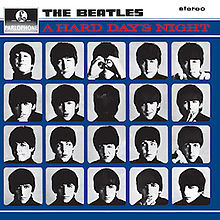 The next American release, Capitol's Something New (July 20, 1964), wasn't the embarrassment of The Beatles Second Album, and included all of the new material from A Hard Day's Night, "Slow Down" and "Long Tall Sally" from the Long Tall Sally EP and the German version of "I Want to Hold Your Hand," "Komm, Gib Mir Deine Hand," with several songs utilizing different single-track mixes and versions of differing lengths depending on whether they were stereo of mono mixes.
The next American release, Capitol's Something New (July 20, 1964), wasn't the embarrassment of The Beatles Second Album, and included all of the new material from A Hard Day's Night, "Slow Down" and "Long Tall Sally" from the Long Tall Sally EP and the German version of "I Want to Hold Your Hand," "Komm, Gib Mir Deine Hand," with several songs utilizing different single-track mixes and versions of differing lengths depending on whether they were stereo of mono mixes.While Vee Jay and other labels (like Atco) would continue to release content as long as they were able, Capitol released The Beatles Story, which consisted of song snippets and interviews, and, prior to Beatles VI, they would release The Early Beatleswhich consisted of songs from Vee Jay releases of years past.
Side One of Beatles for Sale is identical to the American release Beatles '65, with the omission of "Kansas City." Side Two contained 1. Eight Days A Week; 2. Words of Love; 3. Honey Don't; 4. Every Little Thing; 5. I Don't Want To Spoil The Party; 6. What You're Doing; 7. Everybody's Trying To Be My Baby, while Side Two of 'B '65 was 1. Honey Don't; 2. I'll Be Back (from the British pressing of A Hard Day's Night); 3. She's A Woman; 4. I Feel Fine (both 3 and 4 released as a double A sided 45 in the U.K.); 5. Everybody's Trying To Be My Baby; meaning only 11 songs. Each of the omitted tracks would appear on Beatles VI, which also featured "Yes It Is" (the B-side to Ticket to Ride), and two tracks from the yet to be released Help! LP, "You Like Me Too Much" and "Tell Me What You See."
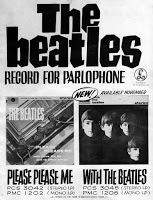 Help! would see The Beatles most sophisticated release to date. Side One included: 1. Help!; 2. The Night Before; 3. You've Got To Hide Your Love Away; 4. I Need You; 5. Another Girl; 6. You're Going To Lose That Girl; 7. Ticket To Ride. Side Two featured 1. Act Naturally; 2. It's Only Love; 3. You Like Me Too Much; 4. Tell Me What You See; 5. I've Just Seen A Face; 6. Yesterday; 7. Dizzy Miss Lizzy. The American issue instead would omit the non-soundtrack tunes and replace them with orchestral filmscores. The remainder of the edited tunes would be distributed among three separate LPs, Beatles VI as mentioned, with "I've Just Seen A Face" and "It's Only Love" released on Rubber Soul and Yesterday and Today receiving the remaining two tracks: "Yesterday" and "Act Naturally".
Help! would see The Beatles most sophisticated release to date. Side One included: 1. Help!; 2. The Night Before; 3. You've Got To Hide Your Love Away; 4. I Need You; 5. Another Girl; 6. You're Going To Lose That Girl; 7. Ticket To Ride. Side Two featured 1. Act Naturally; 2. It's Only Love; 3. You Like Me Too Much; 4. Tell Me What You See; 5. I've Just Seen A Face; 6. Yesterday; 7. Dizzy Miss Lizzy. The American issue instead would omit the non-soundtrack tunes and replace them with orchestral filmscores. The remainder of the edited tunes would be distributed among three separate LPs, Beatles VI as mentioned, with "I've Just Seen A Face" and "It's Only Love" released on Rubber Soul and Yesterday and Today receiving the remaining two tracks: "Yesterday" and "Act Naturally".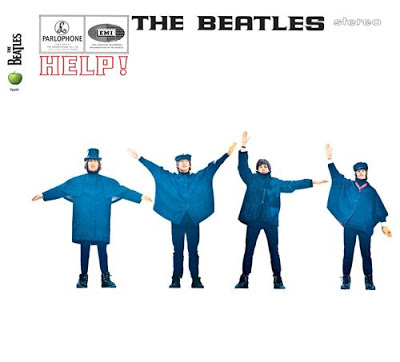 In its usual shuffle, Capitol replaced four Rubber Soul songs with the two mentioned above. The four omitted songs, "Drive My Car", "Nowhere Man", "What Goes On" and "If I Needed Someone" would appear instead on Yesterday and Today. By then, only those who knew how to do calculus could keep up with Capitol's bait and switch process.1966's Revolver would again have 14 British release tracks, while the American version had only 11, omitting "I'm Only Sleeping," "And Your Bird Can Sing," and "Dr, Robert," which had already been released on Yesterday and Today.
In its usual shuffle, Capitol replaced four Rubber Soul songs with the two mentioned above. The four omitted songs, "Drive My Car", "Nowhere Man", "What Goes On" and "If I Needed Someone" would appear instead on Yesterday and Today. By then, only those who knew how to do calculus could keep up with Capitol's bait and switch process.1966's Revolver would again have 14 British release tracks, while the American version had only 11, omitting "I'm Only Sleeping," "And Your Bird Can Sing," and "Dr, Robert," which had already been released on Yesterday and Today.While there was still the EP/LP issue regarding Magical Mystery Tour, Revolver was the last Beatles LP in which track listings were altered; MMT is, of course, the only American release now considered the primary source.
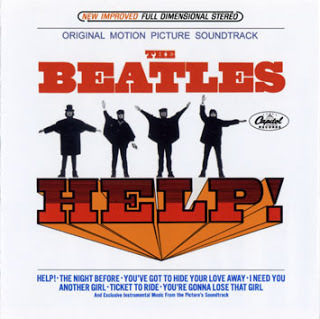
Hey Jude would serve as an interim American release between Abbey Road and Let It Be. Though not the travesty the certain Capitol releases were, it was a mish mosh of style and era, though not a bad evolutionary glance at the band. Side One: 1. Can't Buy Me Love; 2. I Should Have Known Better; 3. Paperback Writer; 4. Rain; 5; Lady Madonna; 6. Revolution. Side 2: 1. Hey Jude; 2. Old Brown Shoe; 3. Don't Let Me Down; 4. The Ballad Of John and Yoko; just ten songs.
It's interesting though that there is more to it all than merely tracks included, cover art and play order. Many of the British versions are of different lengths, different mixes, levels of reverb, verse counts, etc. While the post today is quite extensive, look into the alternate versions on The Beatles Bible, You Tube and a myriad of other sources; the intricacies of it all can fill weeks of your time.
Published on March 16, 2018 03:48
March 15, 2018
The White Album Track By Track - Part 2
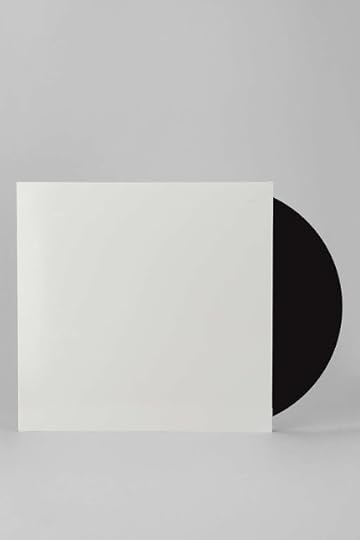 Side Three
Side ThreeBirthday: On September 18, 1968, Paul Mccartney arrived early to Abbey Road and started working on the basic riff for "Birthday." When the others arrived, the song was almost finished. However, and with everyone throwing in ideas, the session was interrupted and the vocals were left unrecorded at 8:30 p.m. Together, The Beatles went to Paul's London home, near Abbey Road and watched on BBC2 The Girl Can't Help It, a film with music from Chuck Berry, Eddie Cochran, Gene Vincent and Fats Domino. After the film, they headed back to the studio and laid down the vocals with Yoko and Pattie Harrison on backup vocals.
Yer Blues: Composed by Lennon as a parody of the British blues that had flourished in the late sixties, John's isolation while in India is apparent. With Brian dead, his marriage a sham and Yoko in England, he'd felt suicidal there, he later said, and searching for cosmic awareness in the Maharishi's camp made him feel "like the clueless Mr. Jones from Bob Dylan's 'Ballad of a Thin Man.'" Lennon channeled his misery into one of his most scalding performances.
Mother's Nature Son: A lecture by the Maharishi in India regarding the unity of man and nature touched both John and Paul, and each wrote beautiful songs about the experience. Paul's "Mother Nature's Son" ranks among his best acoustic ballads, while John's song, "Child of Nature" maybe even better than Paul's, though it never made it to a Beatles release. The track would subsequently be released on Imagine.
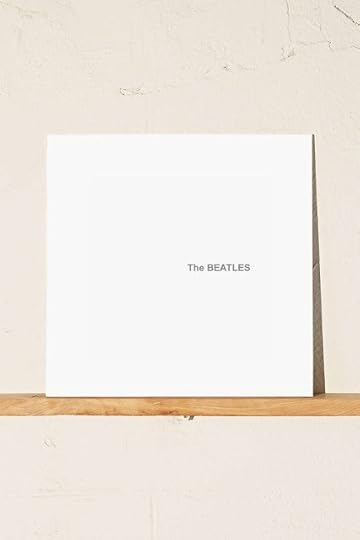 Everybody's Got Something to Hide Except Me and My Monkey: This song reportedly originated in a drawing published by the press in which Yoko was shown as a monkey on John's shoulder. Lennon's reply was this rocker, which he described as "a nice line which I made into a song." The song was recorded slower than reproduced, and hence a 3'07'' take turned into 3'24''. This gives the distorted guitars even a more frantic feeling, conveniently accentuated by John's vocal.
Everybody's Got Something to Hide Except Me and My Monkey: This song reportedly originated in a drawing published by the press in which Yoko was shown as a monkey on John's shoulder. Lennon's reply was this rocker, which he described as "a nice line which I made into a song." The song was recorded slower than reproduced, and hence a 3'07'' take turned into 3'24''. This gives the distorted guitars even a more frantic feeling, conveniently accentuated by John's vocal.Sexy Sadie
Maharishi, what have you done?You made a fool of everyone,
Maharishi, you broke the rules,you laid it down for all to see.
Maharishi, you little twat,Who the fuck do you think you are?Who the fuck do you think you are?Oh you cunt
It all started when rumor suggested that the Maharishi had taken advantage of some of the girls in the course, against his own rules. John revealed the original lyrics to the others while rehearsing at Abbey Road on July 19, 1968. The lyrics were obviously changed to the more cryptic version that appears on the LP.
Helter Skelter: The Beatles heaviest track, "Helter Skelter" is the name of a giant spiral slide that can be found at British fairgrounds. Charles Manson, however, misinterpreted the lyrics and claimed that Helter Skelter was a sign of the coming apocalypse. Paul got the idea after reading a review on a song by the Who in which Pete Townshend called "I Can See For Miles" the loudest, rawest, dirtiest song the Who had ever recorded. Challenge accepted.
Long Long Long; One of the LP’s finest moments comes from George again with this surreal and ethereal tune. The Times called Harrison' s composition equal to any Lennon/McCartney song on the album. The track has a tinge of psychedelia with a jazz undertone that was decidedly un-Beatle-like.
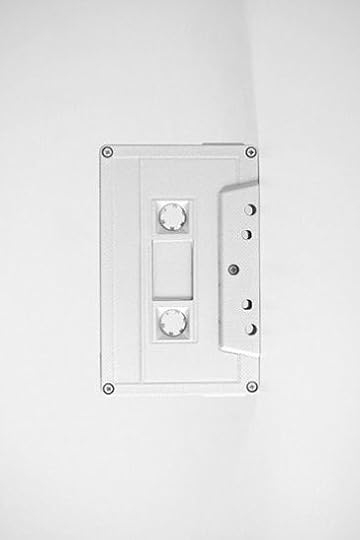 Side Four
Side FourRevolution 1: The LPs most popular song was one of two versions from the White Album sessions, the LP version the lease popular. The song's vocal was recorded by John laying on the floor, with the mic hanging above his mouth. Although originally over 10 minutes, it was edited to the 4 minutes version released in the album. John insisted on the song’s potential as a single, while the other Beatles felt the tempo was decidedly more AOR. The shoo-be-doos were omitted for the alternate track and an instrumental bridge was added. The alternate version was released as the B-Side to Hey Jude, and, although the A-Side made it to No. 1, this B-Side made it to No. 12.
Honey Pie: A 20's style song, clearly influenced by Paul’s father, stands alongside Your Mother Should Know. Totally delightful is the score by George Martin and the production, which really takes us back to those old records with wonderful orchestras playing great tunes.
Savoy Truffle: Eric Clapton played the guitar on While My Guitar Gently Weeps, but he also was the inspiration for Savoy Truffle. Clapton was almost addicted to chocolate, and George decided to write him a song. The lyrics came out almost completely out of a Mackintosh's Good News box of chocolates. Savoy Truffle was one of the chocolates as well as Creme Tangerine, and Coffee Dessert.
Cry Baby Cry: John got the idea for this song out of a television commercial "Cry baby cry, make your mother buy." The song was completed in India with Donovan an influence. A pretty tune that somehow seems less polished than Lennon’s other tracks on the LP.
Revolution 9: This "song" is probably the most skipped track on any Beatles LP (usurpiing that distinction from “Within You, Without). Under Yoko's influence, John felt a need to embrace the avant-garde. The track was recorded in a similar way to the tapes loops in "Tomorrow Never Knows," with techs spooling loops all over Abbey Road's three studios with pencils. John mixed them live, and later added (with Harrison) bizarre lines like "the watusi", "economically viable," "financial imbalance," etc. While the least popular track on the LP, "Revolution 9" is arguably the most studied of Beatles tracks. While I have indeed spent my time deciphering the song, it is, to this writer the most unpleasant of all Beatles tracks.
Goodnight: Like something out of a Walt Disney movie, "Goodnight" is a lullaby written by John for Julian. While musically unremarkable, Martin's score creates one of the Beatles' most beautiful productions.
If you are fascinated by a band falling apart, here you go. If you are interested in delicious eclecticism, try it, too. The Beatles came along almost inconspicuously with its blank cover, 180° from the psychedelic garden parties of the last records. The stylish minimalism quickly became the album's most famous trademark. Almost no one thinks of the eponymous title first, instead of it's nickname, The White Album.

The Beatles were exhausted, they had gone through a tragic loss (Brian Epstein), their first commercial failure (the Magical Mystery Tour film), the psychedelic dream-bubble had smashed in India where the Maharishi had revealed his very profane side, which negated the piece of mind the group was looking for, and the internal conflict was that of too close, too long, not to mention growing up and apart. The White Album is less the work of a band than a project conceived by the individuals who make up the biggest pop group in the world; a playground for individual ideas, a battle of egos, writing and recording side by side, but far from the well-structured LPs the foursome had created since Rubber Soul. The differing ideologies and styles equated to an anything goes approach that retrospectively bursts at its seams.
Many of the songs developed during their doomed trip to India, but what we get is not more weird Sgt.Pepper-pop; in their most distressed hour (pre-Let It Be, that is) the Fab Four let their creativity take precidence over quality control and managed to make something congenial out of an erratic, sometimes sketchy and non-cohesive pile of individual song ideas. The album gains its tremendous greatness exactly because it is so patchy and varied. The divine ("Dear Prudence," "While My Guitar Gently Weeps," "Blackbird"), the daft ("Ob-La Di, Ob-La Da", "Don't pass me by") and the deranged ("Wild Honey Pie,", "Helter Skelter") co-exist on this record, and only in their combination make it what it is, a Beatles LP unlike anything they'd done or would yet do. What number is yours?
Published on March 15, 2018 03:45
March 14, 2018
The White Album Track by Track
 I'm a terrible insomniac. I'll get out of bed at midnight or so and wander around the house. At times, I'm productive – I just finished a re-edit of my novel Miles From Nowhere and I'm working on the cover art – but when I'm not writing, I read or binge watch TV. I get spoiled though. Once I've seen something great, I have trouble settling into something else. I mean how good was Blade Runner 2049 and the new season of Black Mirror? And doesn't Game of Thrones make everything else pale in comparison?
I'm a terrible insomniac. I'll get out of bed at midnight or so and wander around the house. At times, I'm productive – I just finished a re-edit of my novel Miles From Nowhere and I'm working on the cover art – but when I'm not writing, I read or binge watch TV. I get spoiled though. Once I've seen something great, I have trouble settling into something else. I mean how good was Blade Runner 2049 and the new season of Black Mirror? And doesn't Game of Thrones make everything else pale in comparison?Long story short, I find myself moving in odd directions once 3am rolls around. I read all the Harry Potter books backward, for instance (what a different perspective it created). I've never seen all the Star Wars films in order chronologically (Prequels, Rogue 1, original trilogy, 7, 8 – so I’m working on that), but to sum up my sleep issue, I watched Breaking Bad backwards. It's the story of a Drug Lord who becomes a chemistry teacher without cancer. Doesn't have the same impact.
Paul is dead, man; miss him, miss him: Anyway, all that backward thinking reminded me of the backmasking in The Beatles' White Album. While the phenomenon began with "Rain" from the Revolver sessions (Beatles '65 in the U.S.), it's The Beatles when all the hoopla began. As "Revolution No. 9" begins you hear, over and over again, a creepy British voice saying "Number 9 .... Number 9 ... Number 9 ..." (Ringo, I think) along with screaming, crying, the sounds of a crash, and other disturbing sounds. It had to mean something, right? And then some Beatle fanatic somewhere made the stunning decision to play the song backward. In the days of record players and reel-to-reel tape, that wasn't so hard to do. The results were even more disturbing. "Number 9" backward sounds suspiciously like "Turn me on, dead man." Instantly, rumors appeared that Paul McCartney was dead. Go find better publicity than that. Check it all out on youtube if you want – if you're up like me in the middle of the night, you have plenty of time – but if you're more into the music itself, here instead is a rundown of 1968's seminal LP, The Beatles:

Side One.
Back in the USSR: The best evidence of the tension between members of the group was Ringo quitting the Beatles for about 2 weeks. Ringo was always caught in the middle, and on August 22, 1968, he walked out of the studio. In his absence, the Beatles began recording one of their finest rock songs. Basic track drums were played by Paul although they were later completed by John and George while Paul played other instruments. The song was by Paul, written while in Rishikesh with Mike Love of The Beach Boys who commented that The Beach Boys sound, Particularly "Surfin' USA" was owed to Chuck Berry. The end result fused the incredible backing vocals by George and John, in a pure Beach Boys style, a first class lead guitar line and Paul's thrilling vocal, all introduced with jet plane sound effects!
Dear Prudence: Prudence Farrow, sister of actress Mia Farrow, was in India with all four Beatles following the same course. However, Prudence seemingly took it more seriously than anyone else and tried to meditate more and better "trying to reach God quicker" as John later explained. The song was a bit of coaxing on John’s part for Prudence to maybe lighten up a bit.
Glass Onion: John would wax historical on God a few years later, but the introspective Beatle on Glass Onion took his oftentimes cryptic lyrics and explained them away. In the track he referred to as many previous Beatles songs as he could to make it even more difficult than before to understand the connection between them. The reference to Paul being the walrus indeed added to the blossoming McCartney death hoax.
Ob-La-Di Ob-La-Da: One of those songs you ended up singing to your kids, the “life goes on” idea is Paul’s attempt to produce a reggae song. I doubt that it works as a reggae song, but remains Beatle fun.
Wild Honey Pie: An impromptu jam in the ashram led to Paul writing and recording the track on his own by overdubbing a bass drum, his vocals and several acoustic guitars. Paul said that it was a "fragment of an instrumental we weren't sure about. But Pattie Harrison liked it very much, so we decided to leave it on the album"
The Continuing Story of Bungalow Bill: Bungalow Bill was really Richard A. Cooke III, a young college graduate from U.S.A who was visiting his mother in Rishikesh. Nancy Cooke was in India following the same course as the Beatles, and one day they both went tiger hunting. Richard did indeed shoot a tiger, and he happened to tell the Maharishi in front of John and Paul. Of course, John didn't like the story a bit (he had indeed shot the animal hidden in a tree in a wooden platform) and the song came along. The name Bungalow Bill was an amalgamation of "Buffalo Bill" and the bungalows in which they lived in India. Despite its political bent, the recording of the song was seemingly a lot of fun, as almost everyone at the studio joined in for the chorus.
While My Guitar Gently Weeps: George got the idea for the track from the "I Ching" (Chinese book of changes) and decided to write a song with the first line he got out of a book. The line was "gently weeps". The song demonstrates that George had already grown considerably as a composer. Take one of the sessions was a magical acoustic version of the song, yet it was difficult for Harrison to achieve the same magic with more instruments. For the first time, The Beatles brought in an 8-track machine to record a song in Abbey Road, but George wasn’t satisfied. He attempted some backward riffs ala Revolver, but on day two of the recording, while sharing a cab with Eric Clapton, George convinced Eric to play with The Beatles. Clapton initially refused, stating that “no one plays with The Beatles," but George's insistence and the ready availability of his Gibson Les Paul was too big a temptation for Clapton.
Happiness is a Warm Gun: John saw on the cover of a magazine belonging to George Martin the phrase "Happiness is a Warm Gun In Your Hand". Obviously, a song followed. It was a part of Paul’s bent to piece little songs into bigger ones (Uncle Albert and Band on the Run exemplified the trait in later years), but here it was all John. The three distinct parts and the lyrics came out of Lennon’s tripping one night with Derek Taylor, Neill Aspinall and Pete Shoton. Out of this acid brainstorming came the remarkable closer for Side One.
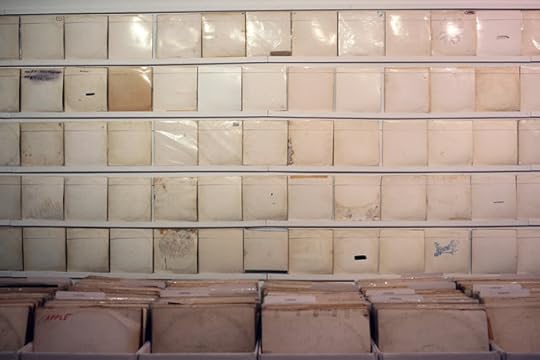
Side Two:
Martha My Dear: Recorded in its entirety by Paul with Martin adding the impeccable scoring at a later date, the track, despite the rumors, was not about Paul's sheepdog Martha. Only the name itself belongs to the shaggy canine. A bit of fun vaudeville along the lines of "When I'm 64."
I'm So Tired: John began to feel so tired while in India. Meditating didn't take that much of an effort, but it sure led to sleepless nights that left as a result, tiring days. The Academy of Meditation was also alcohol and drug-free. John missed both drinks and cigarettes. The song was recorded from beginning to end the same night as Bungalow Bill, adding a bit of realism to the mix. The line muttered at the end of the song by John is "Monsieur, monsieur, how about another one?” which leads straight into -
Blackbird: Simply a blackbird Paul had heard in India, he simply transcribed what the blackbird sang into music. An incredible acoustic track and simply beautiful, just Paul, an acoustic guitar, the ticking of a metronome and some blackbirds. Perfect.
Piggies: Quite in the line of Taxman, George used the Piggies to express his ideas, with piggies as the middle classes. All four Beatles were in the session, though John only participated by putting together some pig sounds in the control room. Remarkable is the baroque feeling of the song with the harpsichord skillfully played by the producer of the session, Chris Thomas, and the string section. Paul's plucking of the bass strings was meant to mimic a pig’s grunting.
Rocky Raccoon: Rocky Raccoon is another example of a wonderful acoustic song written by the Beatles during the India period. In fact, Paul recalled that when he wrote the song he was "sitting on the roof at the Maharishi's". He first got the chords, to later co-write the lyrics with John and Donovan of what was then "Rocky Sasoon." They later decided that Raccoon was a better last name for a Cowboy living in Dakota. It is said that the doctor "sminking" of gin (Paul’s flub of the lyrics), was a real-life character. When Paul chipped his tooth and cut his lip, the doctor that assisted him smank of gin, and that was why Paul's lip was a bit nasty looking in subsequent photos (all of it adding to the Paul is Dead substitution hoax).
Don't Pass Me By: Ringo’s first recorded song has a marked country feeling, much like Ringo's tastes. The final touches to the tune were a sleigh-bell and a fiddle played by a session musician (and not by George Harrison as it has sometimes been written).
Why Don't We Do It In The Road?: AM covered this track as a repetition piece in a series on rock lyrics as poetry. McCartney recorded most of the track on his own with Ringo on drums. Paul's vocals never sounded so Lennon-like).
I Will: Another example of Paul's talent to produce mythical tunes with just an acoustic guitar. Just two acoustic guitars played by Paul, Maracas and Cymbals by Ringo, and John hitting a piece of wood are all the instruments "I Will" needed. Paul’s bass line, the perfect counterpoint to the melody, is actually another layer of the vocals! "I Will" was the first song Paul dedicated to Linda.
Julia: If Paul had shown how exquisite he could be with an acoustic guitar, John was to prove at the end of Side Two that along with his rockers, he was able to write the most intimate, simple and beautiful song dedicated to his mother. At the age of 5 John went to live with his aunt Mimi, and although they were quite distant for years, just as John was becoming an adult, they began to get closer again. John used to do rehearsals with the Quarry Men in her house, and Julia taught him how to play banjo and piano. In 1958 Julia died in a road accident.
- The graphics are from the collection of Rutherford Chang
Published on March 14, 2018 03:56
March 13, 2018
In the Studio - Rock's Most Productive Year
 From 1965 through 1968, there were three distinct shifts away from rock 'n' roll and toward rock. Dylan crafted a focused socio-political bent electrifying the results; the bad boys of rock like The Who and The Stones took the stage in a JD stance of mayhem and volume, while The Beatles and The Beach Boys took to the studio.
From 1965 through 1968, there were three distinct shifts away from rock 'n' roll and toward rock. Dylan crafted a focused socio-political bent electrifying the results; the bad boys of rock like The Who and The Stones took the stage in a JD stance of mayhem and volume, while The Beatles and The Beach Boys took to the studio. 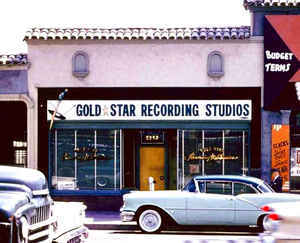 Simultaneously, a shift away from rock n rolls country/blues roots rose alongside the complexities of the free jazz of Coltrane and Miles Davis. Rock was born at the confluence of blues and country, but after 66 blues and country/folk became mere ingredients (two among many) of a much more complex recipe. The lengthy "acid" jams of the Velvet Underground, of Jefferson Airplane, of the Grateful Dead and of Pink Floyd, relied on a loose musical infrastructure that was no longer related to rhythm 'n' blues (let alone country music). It was, on the other hand, very similar to the format of jazz music played in the lofts and the clubs that many psychedelic rock musicians attended. The indirect influence of free jazz gained prominent in the psychedelic era, fueling its musical revolution and emancipating rock music from its blues foundations.
Simultaneously, a shift away from rock n rolls country/blues roots rose alongside the complexities of the free jazz of Coltrane and Miles Davis. Rock was born at the confluence of blues and country, but after 66 blues and country/folk became mere ingredients (two among many) of a much more complex recipe. The lengthy "acid" jams of the Velvet Underground, of Jefferson Airplane, of the Grateful Dead and of Pink Floyd, relied on a loose musical infrastructure that was no longer related to rhythm 'n' blues (let alone country music). It was, on the other hand, very similar to the format of jazz music played in the lofts and the clubs that many psychedelic rock musicians attended. The indirect influence of free jazz gained prominent in the psychedelic era, fueling its musical revolution and emancipating rock music from its blues foundations. 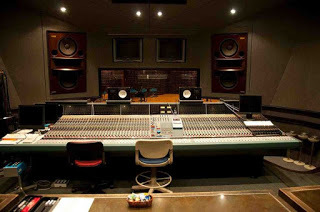 Record PlantRock "festivals" played a major role as well in this (r)evolution with the "Human Be-in" in January 1967 the first of its kind. The music of the hippies was an evolution of folk-rock. It was renamed "acid-rock" because the original idea was that of providing a soundtrack to the LSD parties, a soundtrack that would reflect as closely as possible the effects of an LSD "trip." The Dead took it so far as to have an acid test (did you study?). Psychedelic music was the rock equivalent of abstract painting (Jackson Pollock), free-jazz (Ornette Coleman) and beat poetry (Allen Ginsberg).
Record PlantRock "festivals" played a major role as well in this (r)evolution with the "Human Be-in" in January 1967 the first of its kind. The music of the hippies was an evolution of folk-rock. It was renamed "acid-rock" because the original idea was that of providing a soundtrack to the LSD parties, a soundtrack that would reflect as closely as possible the effects of an LSD "trip." The Dead took it so far as to have an acid test (did you study?). Psychedelic music was the rock equivalent of abstract painting (Jackson Pollock), free-jazz (Ornette Coleman) and beat poetry (Allen Ginsberg). By Revolver, the psychedelic era came to prominence finding its zenith in Sgt. Pepper. In-between were rock freak outs like The Mothers, Kaleidoscope, Days of Future Passed, The Dead’s That’s It For the Other One and Pink Floyd’s Piper at the Gates of Dawn.
 1968, though, was a year in which rock truly diversified. Psychedelia met its match with The Beatles (The White Album), a full reversal of its legendary predecessors Pepper and Magical Mystery Tour, by venturing more fully into rock; and Dylan fucked with our sensibilities yet again with the acoustic John Wesley Harding – a wishy-washy response to the negativity surrounding the electric Dylan of Blonde on Blonde, or Dylan once again more simply being defiant. In 1968, the acid wore off, and while the music would veer off into a myriad of experimentation and innovation, the concentration was seemingly hard core "rockin' out," a term coined sometime that same year.
1968, though, was a year in which rock truly diversified. Psychedelia met its match with The Beatles (The White Album), a full reversal of its legendary predecessors Pepper and Magical Mystery Tour, by venturing more fully into rock; and Dylan fucked with our sensibilities yet again with the acoustic John Wesley Harding – a wishy-washy response to the negativity surrounding the electric Dylan of Blonde on Blonde, or Dylan once again more simply being defiant. In 1968, the acid wore off, and while the music would veer off into a myriad of experimentation and innovation, the concentration was seemingly hard core "rockin' out," a term coined sometime that same year.  The shear wealth of 1967 far overshadows 1968, which, while still a stellar year (Bookends, Electric Ladyland, Music From Big Pink, Beggars Banquet, Cheap Thrills, White Heat/White Light and Waiting for the Sun), was more about the emergence of new music with the forming of Led Zeppelin, King Crimson, Alice Cooper, Joe Cocker, The Flying Burrito Brothers, CSN + Y and Yes. Indeed, something was brewing to bring about Abbey Road, Led Zeppelin I and II, Tommy, Let It Bleed, Hot Buttered Soul, In the Court of the Crimson King and Trout Mask Replica. With that said, 1968 may have been Rock’s most important year in the studio.
The shear wealth of 1967 far overshadows 1968, which, while still a stellar year (Bookends, Electric Ladyland, Music From Big Pink, Beggars Banquet, Cheap Thrills, White Heat/White Light and Waiting for the Sun), was more about the emergence of new music with the forming of Led Zeppelin, King Crimson, Alice Cooper, Joe Cocker, The Flying Burrito Brothers, CSN + Y and Yes. Indeed, something was brewing to bring about Abbey Road, Led Zeppelin I and II, Tommy, Let It Bleed, Hot Buttered Soul, In the Court of the Crimson King and Trout Mask Replica. With that said, 1968 may have been Rock’s most important year in the studio.
Published on March 13, 2018 06:22
March 12, 2018
The Monkees Blow Their Minds
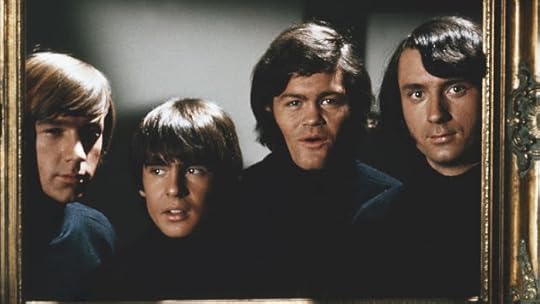 A day late… It was 50 years ago last night, 7:30 Eastern and Pacific, that The Monkees penultimate episode aired (oh, not the second best; the second to last). The show was at the top of its game, but NBC pulled the plug. It wouldn't be for another week that The Monkees changed "Hey, hey" to "Bye, bye," but it was episode 57 when the "Monkees Blew Their Minds," the oddest and shortest episode of all.
A day late… It was 50 years ago last night, 7:30 Eastern and Pacific, that The Monkees penultimate episode aired (oh, not the second best; the second to last). The show was at the top of its game, but NBC pulled the plug. It wouldn't be for another week that The Monkees changed "Hey, hey" to "Bye, bye," but it was episode 57 when the "Monkees Blew Their Minds," the oddest and shortest episode of all. Fittingly, the Fab Faux acknowledged their debt to the Fab Four in the finale, awakening to the Beatles' "Good Morning." It was the first time the Beatles allowed their music to be used in a project that had nothing to do with the band. (John Lennon, it seems, was a huge Monkee fan.) Peter stumbles upon a charlatan mentalist named Oraculo while searching for inspiration to write a song. The Monkees are up for an audition for a ten week gig, and Peter wants to knock everyone's socks off. Oraculo uses a potion to take over Peter's mind, then uses him to both sabotage the Monkees and nab the gig for his mentalist act instead. The guys figure Oraculo is controlling Peter's mind, and set out to save him. Mike distracts Oraculo by posing as an amnesiac who lost a briefcase filled with $50,000 while Micky and Davy rescue Peter. They boys wind up under Oraculo's control, but are unintentionally freed by Oraculo's assistant, Rudy.
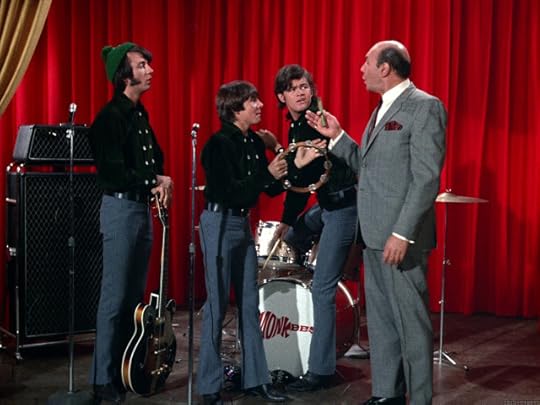
Burgess Meredith makes a cameo as Penguin, one of the club patrons watching Oraculo's act. The highlight of the episode, though, is the opening teaser in which Frank Zappa and Mike Nesmith play each other for a mock interview. Mock is the appropriate word, as they both rip on the Monkees' music as banal and insipid. The pair end up destroying a truck to the beat of a Mothers of Invention song.
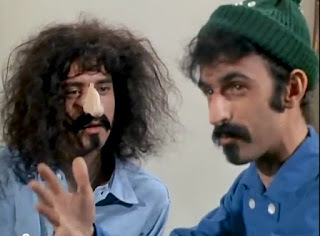 "Quite frankly, we were getting a little jaded with the show as it existed," drummer Micky Dolenz said. "We were, to be quite honest, getting tired of the same format," he added, noting that the band contemplated the idea of doing a live variety show or a sketch series like "Laugh-In." "We wanted to do something a little more unusual, a little more out there."
"Quite frankly, we were getting a little jaded with the show as it existed," drummer Micky Dolenz said. "We were, to be quite honest, getting tired of the same format," he added, noting that the band contemplated the idea of doing a live variety show or a sketch series like "Laugh-In." "We wanted to do something a little more unusual, a little more out there."Later that year, Dolenz and bandmates Mike Nesmith, Peter Tork and Davy Jones starred in the bizarre cult classic movie, "Head," but they never did return to TV, except in reruns.
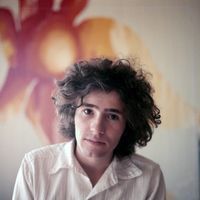 While this episode is the most bizarre, the final episode, while more typical Monkee fare, is equally remarkable in its non-sequitur appearance of Mickey’s friend, Tim Buckley. As the story part of the episode ends, on walks the late singer-songwriter Tim Buckley to perform a solo acoustic version of his classic "Song to the Siren." Buckley was a friend of Dolenz, who thought he should be introduced to the world. The beautiful song would go on to be covered by the Cocteau Twins, This Mortal Coil and Robert Plant. The appearance on the Monkees’ final show remains one of Buckley's finest moments.
While this episode is the most bizarre, the final episode, while more typical Monkee fare, is equally remarkable in its non-sequitur appearance of Mickey’s friend, Tim Buckley. As the story part of the episode ends, on walks the late singer-songwriter Tim Buckley to perform a solo acoustic version of his classic "Song to the Siren." Buckley was a friend of Dolenz, who thought he should be introduced to the world. The beautiful song would go on to be covered by the Cocteau Twins, This Mortal Coil and Robert Plant. The appearance on the Monkees’ final show remains one of Buckley's finest moments.
Published on March 12, 2018 05:35
goodreads - Back to California
 Me by My FatherI grew up in L.A. A different L.A. than the one that's there now, but one that's a part of literary mythology; a mystique that invades everything from the Beach Boys' Pet Sounds to Anais Nin and Henry Miller, Steinbeck and Fitzgerald, Didion and Joni Mitchell.
Me by My FatherI grew up in L.A. A different L.A. than the one that's there now, but one that's a part of literary mythology; a mystique that invades everything from the Beach Boys' Pet Sounds to Anais Nin and Henry Miller, Steinbeck and Fitzgerald, Didion and Joni Mitchell.My first published novel, Jay and the Americans, available on Amazon and Kindle (click on the link in the sidebar), is a fictional memoir of growing up on the best coast. It explores our fascination with cars and fast food, the beach, wealth, "swimmin' pools, movie stars" (if you get that allusion, you're a retro L.A. lover, like me). If you know that the best burgers are at Tommy's, the best hot dogs at Pink's, then you understand L.A. as a friend and character.
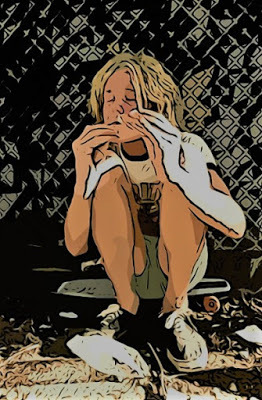
But California isn't only L.A., it's the Grateful Dead and Monterey Pop and Acid Tests and Disneyland. It's big giant trees and wine and earthquakes and Hitchcock and cars and girls. Growing up when I was little, no one was from L.A. Everyone was from somewhere "Back East." Someone at the time said that the world was tilted southwest and everything loose fell to California. If that's you or you'd like to take the whole California to a different level than we do here on AM, check out our page on goodreads.
Dude, what do you want to talk about? Join me/follow me on goodreads and join our new group. So far it's just me.
(Don't forget, Jay and the Americans is available free on Kindle Unlimited.)
Published on March 12, 2018 04:30
Follow Me On goodreads - Let's be lit-buds

I'm finding that my community of vinyl aficionados (I was going to say "freaks" but it doesn't have the same meaning it did in the Zappa years of L.A. when I was but a boy) while obsessing like me over music, do the same snuggled up in bed with their favorite books. I'm currently in the midst of a new novel called A Piece of the World which uses as its inspiration the Andrew Wyeth painting "Christina's World." It's a fascinating read and I can't wait to discuss it on goodreads.
Because of my new fascination with goodreads, I am posting AM on their site as well, which hopefully will drum up new interest in Jay and the Americans while padding my obsession with lit.
 Join me at goodreads and add me as a friend. I'd love to talk books and music, art and nerdy shit. See you there.
Join me at goodreads and add me as a friend. I'd love to talk books and music, art and nerdy shit. See you there.
Published on March 12, 2018 04:00
March 11, 2018
My Useless List - Me and Magdalena
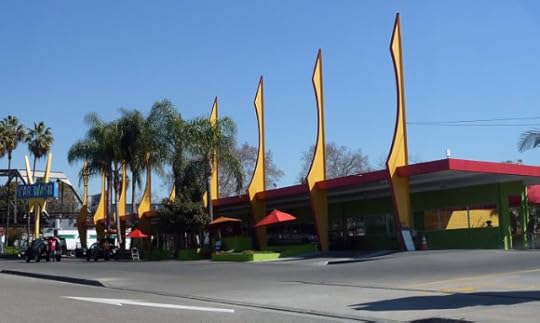 My brother is much older than I am, and so, growing up, his influence was that of an adult. Because of him I was able to participate in a world of grown-ups that wasn't ordinarily the realm of an 11-year-old; places like Wallichs Music City at 3am in one of the record store's listening booths. (I remember specifically the Three Dog Night album One.) As my mother was busy gallivanting around, I'd spend time with him in all-night coffee shops and just driving around the Valley.
My brother is much older than I am, and so, growing up, his influence was that of an adult. Because of him I was able to participate in a world of grown-ups that wasn't ordinarily the realm of an 11-year-old; places like Wallichs Music City at 3am in one of the record store's listening booths. (I remember specifically the Three Dog Night album One.) As my mother was busy gallivanting around, I'd spend time with him in all-night coffee shops and just driving around the Valley. 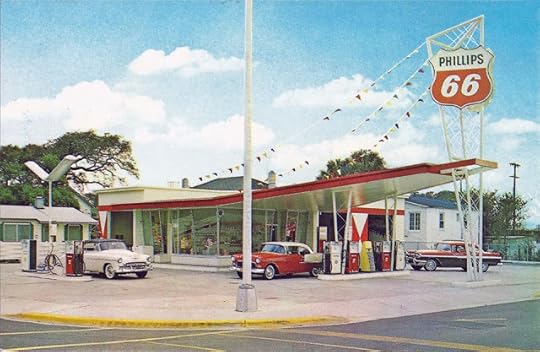
He worked as a short order cook at the Sambo's on Ventura Blvd. and one Christmas, I'd say 1969 or so, he played Sambo in the Ventura Blvd. Christmas Parade. I was instructed to stand at the lamppost in front of the restaurant and "don’t move." I sat at the curb and watched as the marching bands and make-shift floats passed by on a balmy L.A. night and then I looked up to find Mickey Dolenz standing next to me. He looked down, smiled and said something, but I was unable to utter a word.
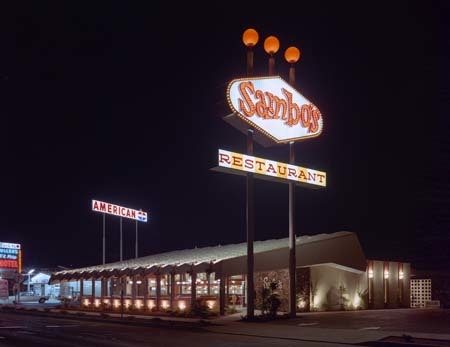
They say not to meet your heroes, and yet the sentiment there, I believe, is in retrospect, and having played the remarkable single, and my favorite from 2016, "Me and Magdalena" by The Monkees, Mike and Mickey to be specific, I'm struggling with the thought of getting the meet and greet tix for the upcoming Monkee shows. My Mickey is still banging on a tympani in the "Randy Scouse Git" video; or looking down at me at the Studio City Christmas Parade.
But I can't stop listening to "Me and Magdalena" (I'm sure you have your fleeting obsessions as well – those songs you just listen to over and over). I don't live in L.A. anymore, and I am well-aware that the L.A. of my youth is gone, like the gas stations and landmarks that adorn this post, but I have to add to my "useless list" (it's a bucket list of really stupid things): I'd like to drive around L.A. with the top down and this song playing.
Published on March 11, 2018 15:06
L.A. Mixed Tape
For New York, it's about the hustle, the traffic, the frenetic energy. Paris is about the lights; London the pomp and circumstance. For L.A. it's the drive, the music coursing through you when you do.
 Breakin' Like the Waves at Malibu
Breakin' Like the Waves at Malibu
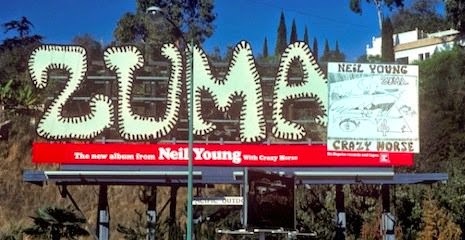 1. Pacific Coast Hwy to Malibu: "There are no bad words for the coast today." Start on PCH, out passed Malibu with Rilo Kiley's "Spectacular Views." Somewhere inside me is a 16 year old with a new DL, a girl named Nikki by his side. It's not that old a song, but it conjures that up like it was '77. 2. Neil Young's "Through My Sails" from Zuma: "I'm standing on the shoreline/ It's so fine out there. Leaving with the wind blowing/ But love takes care." Like a beautiful L.A. day. 3. John Phillips' "Topanga Canyon": "Sometimes I drive out to Topanga and park my car in the sand." It’s a California score at the beach. The Velvet Underground's "I'm Waiting for the Man" comes to mind, but it's L.A. and the sun's out. "Watching and waiting for a pick up from my man." On through the canyon, head all clear, the sun's rays beating down, warm, come up over the crest and twist into the smoggy Valley. 4. (Monkees): "Another Pleasant Valley Sunday, here in Status symbol land." 5. Tom Petty: "It's a long day living in Reseda/ There's a freeway runnin' through the yard." Stop for a burger at Bill and Hiroko's over on Oxnard in Van Nuys. "I want to glide down over Mulholland/ I want to write her name in the sky./ Gonna free fall out into nothin'/ Gonna leave this world for a while."
1. Pacific Coast Hwy to Malibu: "There are no bad words for the coast today." Start on PCH, out passed Malibu with Rilo Kiley's "Spectacular Views." Somewhere inside me is a 16 year old with a new DL, a girl named Nikki by his side. It's not that old a song, but it conjures that up like it was '77. 2. Neil Young's "Through My Sails" from Zuma: "I'm standing on the shoreline/ It's so fine out there. Leaving with the wind blowing/ But love takes care." Like a beautiful L.A. day. 3. John Phillips' "Topanga Canyon": "Sometimes I drive out to Topanga and park my car in the sand." It’s a California score at the beach. The Velvet Underground's "I'm Waiting for the Man" comes to mind, but it's L.A. and the sun's out. "Watching and waiting for a pick up from my man." On through the canyon, head all clear, the sun's rays beating down, warm, come up over the crest and twist into the smoggy Valley. 4. (Monkees): "Another Pleasant Valley Sunday, here in Status symbol land." 5. Tom Petty: "It's a long day living in Reseda/ There's a freeway runnin' through the yard." Stop for a burger at Bill and Hiroko's over on Oxnard in Van Nuys. "I want to glide down over Mulholland/ I want to write her name in the sky./ Gonna free fall out into nothin'/ Gonna leave this world for a while."
 The L.A.-ness of L.A. music isn't merely in the lyrics; Cali's infused in the sound itself, like a whiff of hot asphalt, 6. Steely Dan: "...that fearsome excavation on Magnolia Blvd."), pot smoke, and eucalyptus; music calibrated for car stereos. 7. Laurel Canyon to Lookout Mountain: "But I couldn't let go of L.A./ City of the fallen angels." Joni. Fumble with Spotify: 8. "Oh California I'm coming home/ Oh make me feel good rock 'n' roll band/. I'm your biggest fan/ California I'm coming home." I track down her oak-shrouded bungalow on Lookout Mountain Road and put on "Our House." A cat crosses my path. Maybe Joni's old place is like Hemingway's, with all its kitten descendants. 9. Just behind the Canyon Country Store on Rothdell Trail is Laurel Canyon's most famous address (8826 Lookout Mountain Avenue), Morrison's Love Street house. Living there with Pam Courson, Morrison penned the lyrics to Waiting For the Sun and The Soft Parade." "I see you live on Love Street, there's this store where the creatures meet..."
The L.A.-ness of L.A. music isn't merely in the lyrics; Cali's infused in the sound itself, like a whiff of hot asphalt, 6. Steely Dan: "...that fearsome excavation on Magnolia Blvd."), pot smoke, and eucalyptus; music calibrated for car stereos. 7. Laurel Canyon to Lookout Mountain: "But I couldn't let go of L.A./ City of the fallen angels." Joni. Fumble with Spotify: 8. "Oh California I'm coming home/ Oh make me feel good rock 'n' roll band/. I'm your biggest fan/ California I'm coming home." I track down her oak-shrouded bungalow on Lookout Mountain Road and put on "Our House." A cat crosses my path. Maybe Joni's old place is like Hemingway's, with all its kitten descendants. 9. Just behind the Canyon Country Store on Rothdell Trail is Laurel Canyon's most famous address (8826 Lookout Mountain Avenue), Morrison's Love Street house. Living there with Pam Courson, Morrison penned the lyrics to Waiting For the Sun and The Soft Parade." "I see you live on Love Street, there's this store where the creatures meet..."
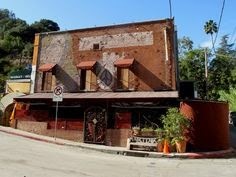 Canyon Country Store10. Sunset to Gower and Warren Zevon's "Desperadoes Under the Eaves":"I was sitting in the Hollywood Hawaiian Hotel/ I was staring in my empty coffee cup/ I was thinking that the gypsy wasn't lying/ All the salty margaritas in Los Angeles/ I’m gonna drink 'em up...Look away, down Gower Avenue/Look away…" Gower! Of all the streets in L.A., Zevon chose that one. Never was such a gorgeous melody attached to such a humdrum street.
Canyon Country Store10. Sunset to Gower and Warren Zevon's "Desperadoes Under the Eaves":"I was sitting in the Hollywood Hawaiian Hotel/ I was staring in my empty coffee cup/ I was thinking that the gypsy wasn't lying/ All the salty margaritas in Los Angeles/ I’m gonna drink 'em up...Look away, down Gower Avenue/Look away…" Gower! Of all the streets in L.A., Zevon chose that one. Never was such a gorgeous melody attached to such a humdrum street.
11. Jack's Mannequin (Andrew McMahon), "Holiday From Real." Maybe the ultimate song about L.A.; L.A. as the character in a play:
She thinks I'm much too thinShe asks me if I'm sickWhat's a girl to do With friends like thisShe lets me drive her car So I can score an eighthFrom the lesbians Out west in Venice
Oh, California in the SummerAh, and my hair is growing longFuck yeah, we can live like this
But if you left it up to meEveryday would be A holiday from realWe'd waste our weeks Beneath the sunWe'd fry our brains And say it's so much fun out hereBut when it's all overI'll come back for another year
I'll look for work todayI'm spilling out the doorPut my glasses on So no one sees meI never thought thatI'd be living on your floorBut the rents are high And LA's easy
Oh, it's a picture of perfectionAh, and the postcards gonna read"Fuck yeah we can live like this...We can live like this"
But if you left it up to meEveryday would be A holiday from realWe'd waste our weeks Beneath the sunWe'd fry our brains And write it's so much fun out here
Hey Madeline (hey Madeline)You sure look fine (you sure look fine)You wore my favorite sweaterBeing poor was never betterA safety buzz (A safety buzz)Some cheap red wine (Some cheap red wine)Oh, the trouble we can get in So let's screw this one up right
But if you left it up to meEveryday would be A holiday from realWe'd waste our weeks Beneath the sunWe'd lie and tell our friendsIt's so much fun out hereBut when it's all overI'll come back for another year
When it's all over I'll come back for anotherWhen it's all over
I'll come back for another year
12. Leave it to Colin Meloy to fill a musically jaunty ode to L.A. with polite, old-timey wordsmithing about burnt cocaine and streetwalker style. The Decemberists songwriter tackles his love-hate relationship with the city—"An ocean’s garbled vomit on the shore"—as a relatable, alluring addiction. L.A. has its faults, but its whimsical charms keep you coming back, "wretched, retching on all-fours," whether out of pure love or borderline addiction. Los Angeles, I'm Yours...
Perhaps the most well-known muse in musical history, Los Angeles has long inspired odes to its beaches and women, its hard city streets and its celebrity siren call. Many are love songs, some are full of more vitriolic verse and others still are die-hard, head-banging anthems: No matter how you feel about the City of Angels, there's a song for that.
 Breakin' Like the Waves at Malibu
Breakin' Like the Waves at Malibu 1. Pacific Coast Hwy to Malibu: "There are no bad words for the coast today." Start on PCH, out passed Malibu with Rilo Kiley's "Spectacular Views." Somewhere inside me is a 16 year old with a new DL, a girl named Nikki by his side. It's not that old a song, but it conjures that up like it was '77. 2. Neil Young's "Through My Sails" from Zuma: "I'm standing on the shoreline/ It's so fine out there. Leaving with the wind blowing/ But love takes care." Like a beautiful L.A. day. 3. John Phillips' "Topanga Canyon": "Sometimes I drive out to Topanga and park my car in the sand." It’s a California score at the beach. The Velvet Underground's "I'm Waiting for the Man" comes to mind, but it's L.A. and the sun's out. "Watching and waiting for a pick up from my man." On through the canyon, head all clear, the sun's rays beating down, warm, come up over the crest and twist into the smoggy Valley. 4. (Monkees): "Another Pleasant Valley Sunday, here in Status symbol land." 5. Tom Petty: "It's a long day living in Reseda/ There's a freeway runnin' through the yard." Stop for a burger at Bill and Hiroko's over on Oxnard in Van Nuys. "I want to glide down over Mulholland/ I want to write her name in the sky./ Gonna free fall out into nothin'/ Gonna leave this world for a while."
1. Pacific Coast Hwy to Malibu: "There are no bad words for the coast today." Start on PCH, out passed Malibu with Rilo Kiley's "Spectacular Views." Somewhere inside me is a 16 year old with a new DL, a girl named Nikki by his side. It's not that old a song, but it conjures that up like it was '77. 2. Neil Young's "Through My Sails" from Zuma: "I'm standing on the shoreline/ It's so fine out there. Leaving with the wind blowing/ But love takes care." Like a beautiful L.A. day. 3. John Phillips' "Topanga Canyon": "Sometimes I drive out to Topanga and park my car in the sand." It’s a California score at the beach. The Velvet Underground's "I'm Waiting for the Man" comes to mind, but it's L.A. and the sun's out. "Watching and waiting for a pick up from my man." On through the canyon, head all clear, the sun's rays beating down, warm, come up over the crest and twist into the smoggy Valley. 4. (Monkees): "Another Pleasant Valley Sunday, here in Status symbol land." 5. Tom Petty: "It's a long day living in Reseda/ There's a freeway runnin' through the yard." Stop for a burger at Bill and Hiroko's over on Oxnard in Van Nuys. "I want to glide down over Mulholland/ I want to write her name in the sky./ Gonna free fall out into nothin'/ Gonna leave this world for a while." The L.A.-ness of L.A. music isn't merely in the lyrics; Cali's infused in the sound itself, like a whiff of hot asphalt, 6. Steely Dan: "...that fearsome excavation on Magnolia Blvd."), pot smoke, and eucalyptus; music calibrated for car stereos. 7. Laurel Canyon to Lookout Mountain: "But I couldn't let go of L.A./ City of the fallen angels." Joni. Fumble with Spotify: 8. "Oh California I'm coming home/ Oh make me feel good rock 'n' roll band/. I'm your biggest fan/ California I'm coming home." I track down her oak-shrouded bungalow on Lookout Mountain Road and put on "Our House." A cat crosses my path. Maybe Joni's old place is like Hemingway's, with all its kitten descendants. 9. Just behind the Canyon Country Store on Rothdell Trail is Laurel Canyon's most famous address (8826 Lookout Mountain Avenue), Morrison's Love Street house. Living there with Pam Courson, Morrison penned the lyrics to Waiting For the Sun and The Soft Parade." "I see you live on Love Street, there's this store where the creatures meet..."
The L.A.-ness of L.A. music isn't merely in the lyrics; Cali's infused in the sound itself, like a whiff of hot asphalt, 6. Steely Dan: "...that fearsome excavation on Magnolia Blvd."), pot smoke, and eucalyptus; music calibrated for car stereos. 7. Laurel Canyon to Lookout Mountain: "But I couldn't let go of L.A./ City of the fallen angels." Joni. Fumble with Spotify: 8. "Oh California I'm coming home/ Oh make me feel good rock 'n' roll band/. I'm your biggest fan/ California I'm coming home." I track down her oak-shrouded bungalow on Lookout Mountain Road and put on "Our House." A cat crosses my path. Maybe Joni's old place is like Hemingway's, with all its kitten descendants. 9. Just behind the Canyon Country Store on Rothdell Trail is Laurel Canyon's most famous address (8826 Lookout Mountain Avenue), Morrison's Love Street house. Living there with Pam Courson, Morrison penned the lyrics to Waiting For the Sun and The Soft Parade." "I see you live on Love Street, there's this store where the creatures meet..."
 Canyon Country Store10. Sunset to Gower and Warren Zevon's "Desperadoes Under the Eaves":"I was sitting in the Hollywood Hawaiian Hotel/ I was staring in my empty coffee cup/ I was thinking that the gypsy wasn't lying/ All the salty margaritas in Los Angeles/ I’m gonna drink 'em up...Look away, down Gower Avenue/Look away…" Gower! Of all the streets in L.A., Zevon chose that one. Never was such a gorgeous melody attached to such a humdrum street.
Canyon Country Store10. Sunset to Gower and Warren Zevon's "Desperadoes Under the Eaves":"I was sitting in the Hollywood Hawaiian Hotel/ I was staring in my empty coffee cup/ I was thinking that the gypsy wasn't lying/ All the salty margaritas in Los Angeles/ I’m gonna drink 'em up...Look away, down Gower Avenue/Look away…" Gower! Of all the streets in L.A., Zevon chose that one. Never was such a gorgeous melody attached to such a humdrum street. 11. Jack's Mannequin (Andrew McMahon), "Holiday From Real." Maybe the ultimate song about L.A.; L.A. as the character in a play:
She thinks I'm much too thinShe asks me if I'm sickWhat's a girl to do With friends like thisShe lets me drive her car So I can score an eighthFrom the lesbians Out west in Venice
Oh, California in the SummerAh, and my hair is growing longFuck yeah, we can live like this
But if you left it up to meEveryday would be A holiday from realWe'd waste our weeks Beneath the sunWe'd fry our brains And say it's so much fun out hereBut when it's all overI'll come back for another year
I'll look for work todayI'm spilling out the doorPut my glasses on So no one sees meI never thought thatI'd be living on your floorBut the rents are high And LA's easy
Oh, it's a picture of perfectionAh, and the postcards gonna read"Fuck yeah we can live like this...We can live like this"
But if you left it up to meEveryday would be A holiday from realWe'd waste our weeks Beneath the sunWe'd fry our brains And write it's so much fun out here
Hey Madeline (hey Madeline)You sure look fine (you sure look fine)You wore my favorite sweaterBeing poor was never betterA safety buzz (A safety buzz)Some cheap red wine (Some cheap red wine)Oh, the trouble we can get in So let's screw this one up right
But if you left it up to meEveryday would be A holiday from realWe'd waste our weeks Beneath the sunWe'd lie and tell our friendsIt's so much fun out hereBut when it's all overI'll come back for another year
When it's all over I'll come back for anotherWhen it's all over
I'll come back for another year
12. Leave it to Colin Meloy to fill a musically jaunty ode to L.A. with polite, old-timey wordsmithing about burnt cocaine and streetwalker style. The Decemberists songwriter tackles his love-hate relationship with the city—"An ocean’s garbled vomit on the shore"—as a relatable, alluring addiction. L.A. has its faults, but its whimsical charms keep you coming back, "wretched, retching on all-fours," whether out of pure love or borderline addiction. Los Angeles, I'm Yours...
Perhaps the most well-known muse in musical history, Los Angeles has long inspired odes to its beaches and women, its hard city streets and its celebrity siren call. Many are love songs, some are full of more vitriolic verse and others still are die-hard, head-banging anthems: No matter how you feel about the City of Angels, there's a song for that.
Published on March 11, 2018 04:07
March 10, 2018
The Center of the Universe
 There is something uneasy in the Los Angeles air this afternoon, some unnatural stillness, some tension. What it means is that tonight a Santa Ana will begin to blow, a hot wind from the northeast whining down through the Cajon and San Gorgonio Passes, blowing up sandstorms out along Route 66, drying the hills and the nerves to the flash point. For a few days now we will see smoke back in the canyons, and hear sirens in the night. I have neither heard nor read that a Santa Ana is due, but I know it, and almost everyone I have seen today knows it too. We know it because we feel it. The baby frets. The maid sulks. I rekindle' a waning argument with the telephone company, then cut my losses and lie down, given over to whatever it is in the air. To live with the Santa Ana is to accept, consciously or unconsciously, a deeply mechanistic view of human behavior. I remember being told, when I first moved to Los Angeles and was living on an isolated beach, that the Indians would throw themselves into the sea when the bad wind blew. I could see why. – Joan Didion
There is something uneasy in the Los Angeles air this afternoon, some unnatural stillness, some tension. What it means is that tonight a Santa Ana will begin to blow, a hot wind from the northeast whining down through the Cajon and San Gorgonio Passes, blowing up sandstorms out along Route 66, drying the hills and the nerves to the flash point. For a few days now we will see smoke back in the canyons, and hear sirens in the night. I have neither heard nor read that a Santa Ana is due, but I know it, and almost everyone I have seen today knows it too. We know it because we feel it. The baby frets. The maid sulks. I rekindle' a waning argument with the telephone company, then cut my losses and lie down, given over to whatever it is in the air. To live with the Santa Ana is to accept, consciously or unconsciously, a deeply mechanistic view of human behavior. I remember being told, when I first moved to Los Angeles and was living on an isolated beach, that the Indians would throw themselves into the sea when the bad wind blew. I could see why. – Joan Didion 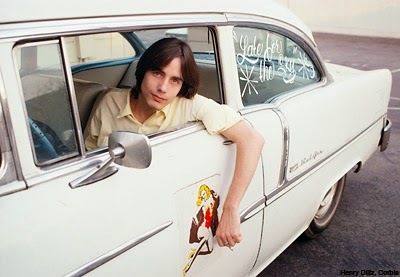 So there were interesting houses we could walk to. Or we would catch a ride to Peter Tork's house on Willow Glen. Peter had been a dishwasher at the Golden Bear in Huntington Beach and now he was a TV star, a Monkee. My friend Ned Doheny and I would say, "Let's go up to Peter's house, see what's going on." Sometimes you would walk in and there would be twelve girls in the pool, naked. And they were beautiful women, people of substance, not bimbos-not that we would have minded if they were bimbos. One time Jimi Hendrix was up there jamming with Buddy Miles in the pool house, and Peter's girlfriend was playing the drums, naked. She was gorgeous, like a Varga girl is gorgeous, this physically flawless creature. She looked like the drawings of Indian maidens that they airbrush on motorcycle tanks. I don't think she was as good a drummer as she was an object of desire, but she was something. Barry Friedman was on Ridpath too, about a block from Billy James, two blocks from Paul Rothchild. – Jackson Browne
So there were interesting houses we could walk to. Or we would catch a ride to Peter Tork's house on Willow Glen. Peter had been a dishwasher at the Golden Bear in Huntington Beach and now he was a TV star, a Monkee. My friend Ned Doheny and I would say, "Let's go up to Peter's house, see what's going on." Sometimes you would walk in and there would be twelve girls in the pool, naked. And they were beautiful women, people of substance, not bimbos-not that we would have minded if they were bimbos. One time Jimi Hendrix was up there jamming with Buddy Miles in the pool house, and Peter's girlfriend was playing the drums, naked. She was gorgeous, like a Varga girl is gorgeous, this physically flawless creature. She looked like the drawings of Indian maidens that they airbrush on motorcycle tanks. I don't think she was as good a drummer as she was an object of desire, but she was something. Barry Friedman was on Ridpath too, about a block from Billy James, two blocks from Paul Rothchild. – Jackson Browne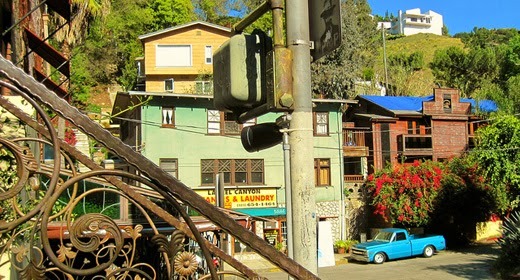 Located within Los Angeles/San Fernando Valley Coordinates: 34.117275°N 118.375281°W, City of Los Angeles, County of Los Angeles, Time Zone: PST (UTC-8), Laurel Canyon was first developed in the early 1900s, and became a part of the city of Los Angeles in 1923 (prior to then, it was an unincorporated part of Los Angeles County). Much like Topanga Canyon, community life was and is focused on its central thoroughfare. Some of the main side streets are Mount Olympus, Kirkwood, Wonderland, Willow Glen, and Lookout Mountain Avenue. The zip code for the neighborhood is 90046. Laurel Canyon is an important transit corridor between West Hollywood and the San Fernando Valley, specifically Studio City. The division between the two can roughly be defined by the intersection of Laurel Canyon and Mulholland Drive. Laurel Canyon was inhabited by the local Tongva tribe of Native Californians before the arrival of the Spanish. A spring-fed stream that flowed year round provided water. It was that water that attracted Mexican ranchers who established sheep grazing on the hillsides in the late 18th and early 19th centuries. After the Mexican government was ejected, the area caught the attention of Anglo settlers interested in water rights. Around the turn of the century, the area was subdivided and marketed as mountain vacation properties.
Located within Los Angeles/San Fernando Valley Coordinates: 34.117275°N 118.375281°W, City of Los Angeles, County of Los Angeles, Time Zone: PST (UTC-8), Laurel Canyon was first developed in the early 1900s, and became a part of the city of Los Angeles in 1923 (prior to then, it was an unincorporated part of Los Angeles County). Much like Topanga Canyon, community life was and is focused on its central thoroughfare. Some of the main side streets are Mount Olympus, Kirkwood, Wonderland, Willow Glen, and Lookout Mountain Avenue. The zip code for the neighborhood is 90046. Laurel Canyon is an important transit corridor between West Hollywood and the San Fernando Valley, specifically Studio City. The division between the two can roughly be defined by the intersection of Laurel Canyon and Mulholland Drive. Laurel Canyon was inhabited by the local Tongva tribe of Native Californians before the arrival of the Spanish. A spring-fed stream that flowed year round provided water. It was that water that attracted Mexican ranchers who established sheep grazing on the hillsides in the late 18th and early 19th centuries. After the Mexican government was ejected, the area caught the attention of Anglo settlers interested in water rights. Around the turn of the century, the area was subdivided and marketed as mountain vacation properties.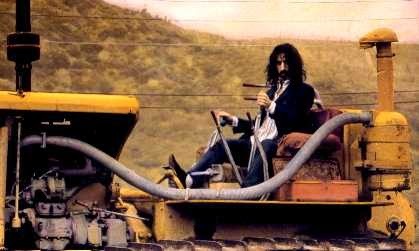 Between 1912 and 1918 a trackless electric trolley ran up the canyon from Sunset Boulevard to the base of Lookout Mountain Road where a road house served visitors. Travel to the newly subdivided lots and cabins further up the canyon was, at first, made on foot or by mule. As the roads were improved access was possible by automobile. Around 1920, a local developer built the Lookout Mountain Inn at the summit of Lookout Mountain and Sunset Plaza roads, which burned just a few years after opening. Among the famous places in Laurel Canyon are the log cabin house once owned by silent film star Tom Mix that later became home to the Zappa clan, and, directly across the street, the home of Harry Houdini, and, as readers of AM are aware, Laurel Canyon found itself a nexus of counterculture activity and attitudes in the 1960s. That bohemian spirit endures today, and residents gather annually for a group photograph at the country market.
Between 1912 and 1918 a trackless electric trolley ran up the canyon from Sunset Boulevard to the base of Lookout Mountain Road where a road house served visitors. Travel to the newly subdivided lots and cabins further up the canyon was, at first, made on foot or by mule. As the roads were improved access was possible by automobile. Around 1920, a local developer built the Lookout Mountain Inn at the summit of Lookout Mountain and Sunset Plaza roads, which burned just a few years after opening. Among the famous places in Laurel Canyon are the log cabin house once owned by silent film star Tom Mix that later became home to the Zappa clan, and, directly across the street, the home of Harry Houdini, and, as readers of AM are aware, Laurel Canyon found itself a nexus of counterculture activity and attitudes in the 1960s. That bohemian spirit endures today, and residents gather annually for a group photograph at the country market.Robert A. Heinlein's short story "—And He Built a Crooked House—" mentions an address on Lookout Mountain Ave. as the residence of the mad architect Quintus Teal. In real life, that address, 8775 Lookout Mountain Avenue, was the residence of Heinlein and his wife. The story has nothing to do with Laurel Canyon.
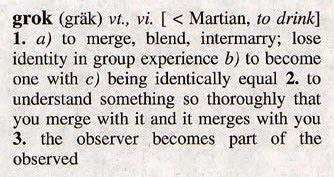 Notable residents past and present include Jennifer Aniston, The Beatles, Clara Bow (1920s, Lookout Mountain) , Tommy Boyce and Bobby Hart, Louise Brooks (1927), Jackson Browne, Eric Burdon, David Byrne, Lon Chaney, Jr., George Clooney (present), Alice Cooper, David Crosby, Kat VonD (present), The Doors, Henry Diltz, Mickey Dolenz and Peter Tork, Francis Farmer, Errol Flynn, The Eagles, Greta Garbo, Katherine Helmond, Boris Karloff, Anthony Kiedis, k.d. lang, Leadbelly, Timothy Leary, Bela Legosi, Marilyn Manson, Dean Martin, Steve Martin, Joni (still owns the Lookout Mountain cottage), Toom Morello, Trent Reznor, Keith Richards, Slash, Justin Timberlake (present), Orson Welles, Pete Wentz (present), Brian Wilson, Neil Young, Zappa.
Notable residents past and present include Jennifer Aniston, The Beatles, Clara Bow (1920s, Lookout Mountain) , Tommy Boyce and Bobby Hart, Louise Brooks (1927), Jackson Browne, Eric Burdon, David Byrne, Lon Chaney, Jr., George Clooney (present), Alice Cooper, David Crosby, Kat VonD (present), The Doors, Henry Diltz, Mickey Dolenz and Peter Tork, Francis Farmer, Errol Flynn, The Eagles, Greta Garbo, Katherine Helmond, Boris Karloff, Anthony Kiedis, k.d. lang, Leadbelly, Timothy Leary, Bela Legosi, Marilyn Manson, Dean Martin, Steve Martin, Joni (still owns the Lookout Mountain cottage), Toom Morello, Trent Reznor, Keith Richards, Slash, Justin Timberlake (present), Orson Welles, Pete Wentz (present), Brian Wilson, Neil Young, Zappa.
Published on March 10, 2018 09:49



